The SO-152 (GRAU 2S3 Akatsiya) is a Soviet 152.4 mm self-propelled gun. It was first developed in 1968 to answer the American 155 mm M109 howitzer. Development started in 1967, an it completed, accepted for service in 1971 entered service. Its GRAU designation is 2S3. Following the ironic flower naming tradition of Soviet SPGs, "Akatsiya" (Акация) stands for "Acacia".

The soviet "big seven" for NATO
Thus in the mid-1960s, some in the general staff directed a new developement for a family of armoured vehicles based on existing ordnance: 2S1, 2S3, 2S4 and 2S7. The 2S1 Gvodzika was the 2A18 122 mm (4.8 in) howitzer SPG with a good all package but its low profile meant sort range, and it appeared outranged by the M109 (15 km) and limited in other aspects, notably its drivetrain but overall it became a massive success with countless exports and derivatives.
For the 155 mm ordnance in the Soviet inventory, the 152.4 mm D-22 howitzer was capable of a 24 km range, which was close to the M109 (23 km for the M109A1). It was chosen for a basis of development with a different, more robust universal chassis and redesigned turret. The 2S4 Tyulpan was on its side, a 240 mm self-propelled heavy mortar, and the 2S7 Peon, a 8-in (203 mm) semi-open SPG.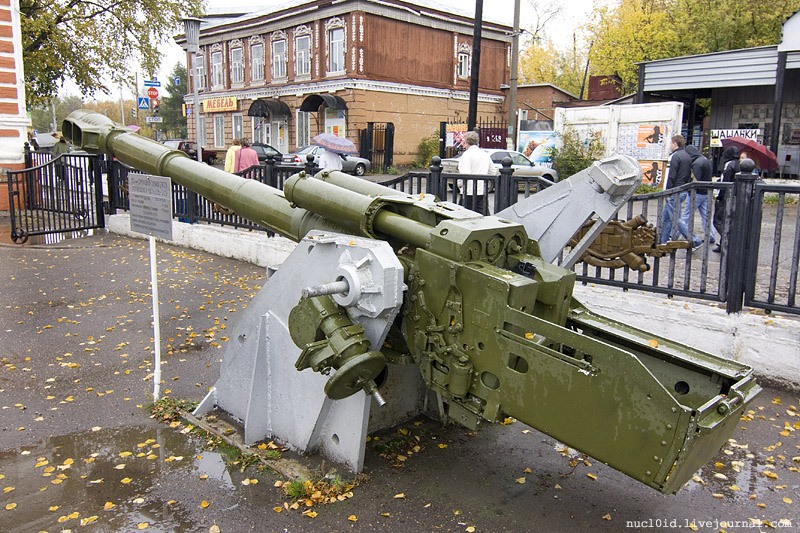
D22 2A33 Howitzer
This towed howitzer was designed from 1948-49 by F.F. Petrov design bureau and developed over the years, only entering service by 1955. Still in service today, 3,000 made by No. 9 Uralmash plant. It was known as NATO M1955, D-72 project name, 52-P-546 for its GRAU index and later Type 66 as produced by the Chinese, then PL66, 152 H55 in Finnish service and A411 in Romanian service or Obuzier calibrul 152-mm tractat M1981.
The D-20 uses a two wheel split trail carriage, shielded (same as D-74), 10 operators, 34-caliber with double baffle muzzle brake. Max range at the origin was 17.4 km at a 5-6 rpm, 2-4 rpm sustained. It was towed by a 6x6 truck, generally Ural 375D and AT-S artillery tractor. It was widely used by Soviet and Warsaw Pact forces, exported and replaced by the towed 2A65 and 2A36 as well as the self-propelled 2S3 Akatsiya.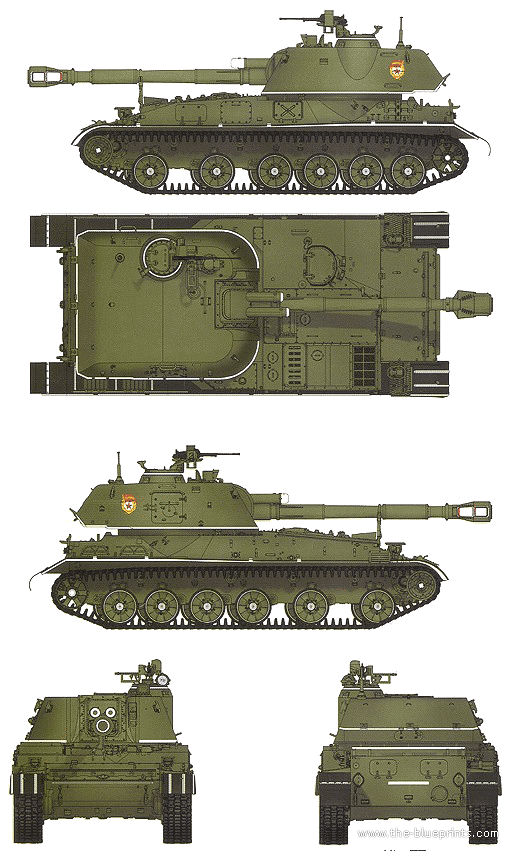
The vehicle weighted 28 metric tons for a total lenght of 8.4 m (27 ft 7 in) with the gun on its travelling lock forward. The hull itself was 7.765 m (25 ft 6 in) in lenght. The vehicle was 3.25 m (10 ft 8 in) wide and 3.05 m (10 ft 0 in) in height. Still relatively compact, but less than the 2S1.
A crew of four took place inside: The driver was seated forward to the left, close to the engine and transmission to his right. He had a back-hinging hatch, and two sights forward. To his right was the engine compartment, with the main fuel tank, transmission and diesel V12 (see later).
The rest of the crew were seated in the squarish turret, with the gunner in front left, with his own main gun sight, infrared vision, and the commander seated right behind in an elevated position, and his own cupola with panoramic sights all around. The loader was seated on the left rear. Rounds were stored in part in the angular, flat bustle.
The turret front was the best protected of the vehicle, at 30 mm (1.2 in), same for the glacis front, and 15 mm (0.6 in) of RHA on all sides. There were no smoke dischargers, however there is a collective NBC system, with sealing, overpressure, and halon type automatic extinguishers inside the turret and engine compartment. It seems there was not dedicated system to prevent cooking off the stored shells.
The Secondary defensive armament comprised a single 7.62 mm remotely controlled PKT tank machine gun with 1,500 rounds in reserve, placed newt to the commander's cupola.
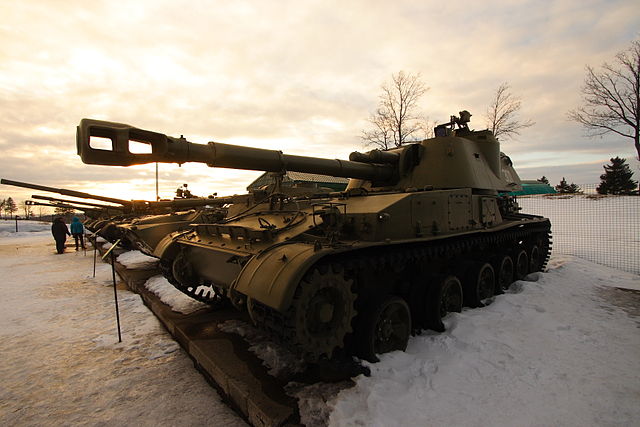
Preserved vehicle at the "stalin line"
Soviet use was through artillery regiments of Soviet tank and motor rifle divisions. Only one gun battalion of each artillery regiment had the Akatsiya (18 each) organicall at first. But by the end of 1980s first echelon tank and motor rifle divisions, notably those in Germany had 36 or 54 of these, 2 or 3 gun battalions. Some had 54 Akatsiya at peak strenght strength:
96th self-propelled artillery regiment (stationed in Borna) of 9th Tank Division
-724th Guards Warsaw self-propelled artillery regiment (stationed in Neustrelitz) of 16th Guards Tank Division
-400th Red Banner Transylvania self-propelled artillery regiment (stationed in Bernau bei Berlin) of 90th Guards Tank Division
-1054th Red Banner self-propelled artillery regiment (Rathenow) of 21st Motor Rifle Division
-54th Guards Red Banner Poznan self-propelled regiment (stationed in Halle) of 27th Guards Motor Rifle Division -944th Guards Red Banner Chernovtsy-Gniezno self-propelled artillery regiment (Leisnig), 20th Guards Motor Rifle Division
-283rd Red Banner Warsaw self-propelled artillery regiment (stationed in Olympisches Dorf) of 35th Motor Rifle Division
-87th Guards Red Banner Poznan self-propelled artillery regiment (stationed in Gotha) of 39th Guards Motor Rifle Division (actual strength: 52)
-199th Guards Red Banner Brandenburg self-propelled regiment (stationed in Wismar) of 94th Guards Motor Rifle Division
-693rd Red Banner self-propelled artillery regiment (stationed in Stendal) of 207th Motor Rifle Division Those who had 36 Akatsiya:
-744th Guards Ternopol self-propelled artillery regiment (stationed in Altengrabow) of 10th Guards Tank Division
-841st Guards Red Banner Chernovtsy self-propelled artillery regiment (stationed in Chemnitz) of 11th Tank Division
-117th self-propelled artillery regiment (stationed in Mahlwinkel) of 12th Guards Tank Division had (actually 34)
-99th Guards Red Banner Pomerania self-propelled regiment (stationed in Magdeburg) of 47th Guards Tank Division -172nd Guards Red Banner Berlin self-propelled artillery regiment (stationed in Rudolstadt) of 79th Guards Tank Division
One excaption was the 286th Guards Red Banner Prague howitzer artillery brigade (Potsdam) which had 72 Akatsiya.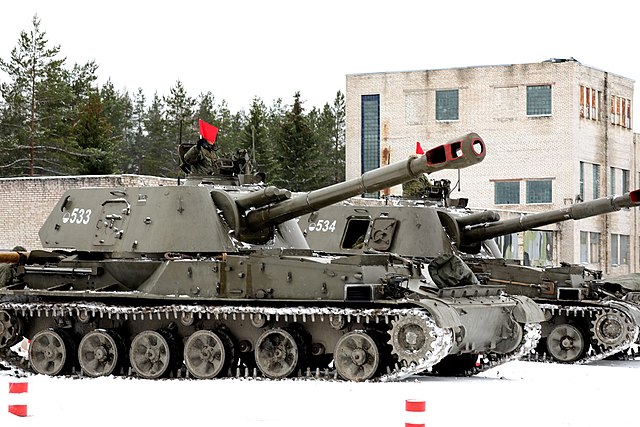
2S3Ms in a winter exercize, 2020
In 2007, the Russian Army stated some 1,002 2S3 Akatsiya in active service, more than 1,000 in storage, while the marines had 400 2S3 in active service, 600 in storage. For a grand total produced of c4,000, this means some 1,000 had been in the hands of Warsaw Pact countries and exported post-1990. It is reputed in service with the following:
-200th Separate Motor Rifle Brigade (Pechenga, Leningrad District): 36
-138th separate motor rifle brigade(Kamenka, Leningrad District): 36
-2nd Guards Taman motor rifle division (Alabino, Moscow District): 96 in 3 motor rifle regiments, 1 tank regiment
-3rd Sormovo motor rifle division (Mulino, Nizhny Novgorod), Moscow District: 96 Akatsiya, 2 motor rifle regiments, 2 tank regiments) -4th Guards Kantemirovka tank division (Naro-Fominsk, Moscow District): 95 in 3 tank regiments, 1 motor rifle regiment -10th Guards Ural-Lvov tank division (Boguchar, Voronezh Oblast, Moscow District): 75, in 2 tank regiments, 1 motor rifle regiment
-81st separate motor rifle regiment (Samara, Volga-Ural District): 25
-27th Guards motor rifle division (Totskoye, Volga District): 73 in 2 motor rifle regiments, 1 tank regiment)
-19th Red Banner Voronezh-Shumlin motor rifle division (Vladikavkaz, North Caucasus District): 16 Akatsiya, 3 motor rifle regiments
-205th separate motor rifle cossack brigade (Budyonnovsk, same): 12
-136th Guards Uman-Berlin separate motor rifle brigade (Buynaksk, Dagestan, same): 12
-131st separate motor rifle brigade (Maykop, Adygea, same): 24
-33rd separate motor rifle regiment (Prudboy, same): 12
-Two arsenals of Central Command (Perm): 91
-8th motor rifle brigade (Tiraspol, Transnistria): 36
The Russian Navy operates these at the 385th storage in Lugovoe (Kaliningrad) Baltic Fleet (24), Gusev, Baltic Fleet (31), 55th marine division of Vladivostok, Pacific Fleet.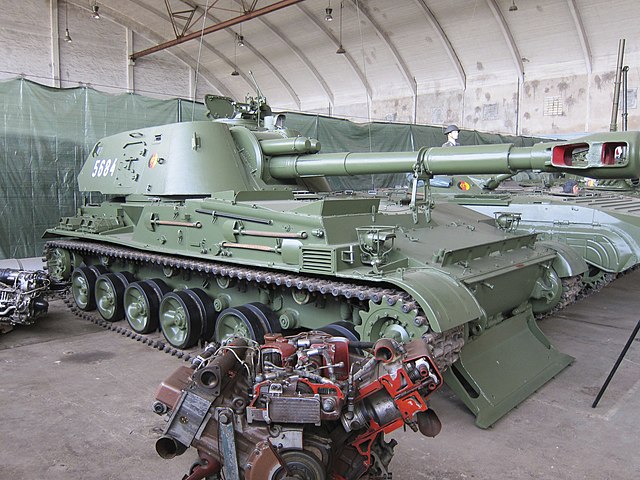
East German Selbstfahrlafette 2S3 Akazija
As of September 2023, losses in the current conflict with Ukraine according to Oryx Spioenkop has been: 132 2S3M, all destroyed or captured (31). Ukrainian losses has been of 34 vehicles, including 4 captured. As a remainder, Ukraine nominally still had a park of 470 vehicles.
deagel.com
mil.ru
vif2ne.ru
armyrecognition.com/
museum-tank.ru
legion.wplus.net
wartechnic.ru
armoured.vif2.ru
oryxspioenkop Russian losses in Ukraine 2023
Ukrainian losses 2023
Sketchfab 3D model
armyrecognition.com 2S3 data
army-guide.com
On weaponsystems.net
on stat bureau (prod. src)
On mil-today
On Wikipedia EN
Development
The appearance of the US M109 in Vietnam and reports from its performances led the general staff to rethink about the Soviet Self Propelled Gun park (or lack thereof). The offer was weak on this side indeed. There were still an inventory of WW2 vehicles such as the SU-176, SU-122 and SU-152, but rocket lanching vehicles appeared in favor still at the time, being way cheaper. There were few exceptions though, such as the massive 1956 2A3 Kondensator 2P (5 built) and 1957 2B1 Oka, single prototype of a 420mm, 20m barrel, until Ballistic TELs were preferred. Meanwile the US Army deployed many SPGs in Vietnam to great effect: M40 GMC, M44, M55, semi or fully enclosed, and the open M107 and M110. They were all hard-hitting with long range, and a mobility to avoid counter-battery fire.
The soviet "big seven" for NATO
Thus in the mid-1960s, some in the general staff directed a new developement for a family of armoured vehicles based on existing ordnance: 2S1, 2S3, 2S4 and 2S7. The 2S1 Gvodzika was the 2A18 122 mm (4.8 in) howitzer SPG with a good all package but its low profile meant sort range, and it appeared outranged by the M109 (15 km) and limited in other aspects, notably its drivetrain but overall it became a massive success with countless exports and derivatives.
For the 155 mm ordnance in the Soviet inventory, the 152.4 mm D-22 howitzer was capable of a 24 km range, which was close to the M109 (23 km for the M109A1). It was chosen for a basis of development with a different, more robust universal chassis and redesigned turret. The 2S4 Tyulpan was on its side, a 240 mm self-propelled heavy mortar, and the 2S7 Peon, a 8-in (203 mm) semi-open SPG.
About the D-22 Howitzer

D22 2A33 Howitzer
This towed howitzer was designed from 1948-49 by F.F. Petrov design bureau and developed over the years, only entering service by 1955. Still in service today, 3,000 made by No. 9 Uralmash plant. It was known as NATO M1955, D-72 project name, 52-P-546 for its GRAU index and later Type 66 as produced by the Chinese, then PL66, 152 H55 in Finnish service and A411 in Romanian service or Obuzier calibrul 152-mm tractat M1981.
The D-20 uses a two wheel split trail carriage, shielded (same as D-74), 10 operators, 34-caliber with double baffle muzzle brake. Max range at the origin was 17.4 km at a 5-6 rpm, 2-4 rpm sustained. It was towed by a 6x6 truck, generally Ural 375D and AT-S artillery tractor. It was widely used by Soviet and Warsaw Pact forces, exported and replaced by the towed 2A65 and 2A36 as well as the self-propelled 2S3 Akatsiya.
Design of the 2S3 Akatsiya
Hull and general design

The vehicle weighted 28 metric tons for a total lenght of 8.4 m (27 ft 7 in) with the gun on its travelling lock forward. The hull itself was 7.765 m (25 ft 6 in) in lenght. The vehicle was 3.25 m (10 ft 8 in) wide and 3.05 m (10 ft 0 in) in height. Still relatively compact, but less than the 2S1.
A crew of four took place inside: The driver was seated forward to the left, close to the engine and transmission to his right. He had a back-hinging hatch, and two sights forward. To his right was the engine compartment, with the main fuel tank, transmission and diesel V12 (see later).
The rest of the crew were seated in the squarish turret, with the gunner in front left, with his own main gun sight, infrared vision, and the commander seated right behind in an elevated position, and his own cupola with panoramic sights all around. The loader was seated on the left rear. Rounds were stored in part in the angular, flat bustle.
Powerplant & Performances
Th 2S3 was powered by a V-59, 12-cylinder, 4-stroke V-shaped water-cooled diesel rated for 520 hp (382.7 kW) at 2,000 rpm and delivering a Power/weight ratio of 18.9 hp/t (13.92 kW/t). It was coupled with a mechanical double-flow, planetary gear-gearbox transmission. Suspensioncomprised independent torsion bars with hydraulic shock absorbers of 1st and 6th road wheels. The chassis comprised twelve doubled ruberrized roadwheels, with unequal span: The first three were further apart than the three aft, to better support the turret. Ground clearance was 0.45 m (1 ft 6 in) and fuel capacity 830 liters. Operational range was 500 km (310 mi) and top speed on road 63 km/h (39 mph), down off-road to just 45 km/h (28 mph).Protection, passive and active
The front was sloped, and the turret was squarish in shape with a rounded sloped front and angular bustle, rectangular overall. The sides were sloped inwards. It was itself placed towards the center-rear of the hull, aft of the main engine compartment, with extra storage a the back for rounds. The rear part of the hull was reclining inwards with sponsons arund the turret ring.The turret front was the best protected of the vehicle, at 30 mm (1.2 in), same for the glacis front, and 15 mm (0.6 in) of RHA on all sides. There were no smoke dischargers, however there is a collective NBC system, with sealing, overpressure, and halon type automatic extinguishers inside the turret and engine compartment. It seems there was not dedicated system to prevent cooking off the stored shells.
Armament
The centerpiece of the vehicle and raison d'être was its main 152.4 mm D-22 howitzer L/27, which breech had a semi-automatic vertical wedge. It could elevate from −4° to +60° and thanks to the turret, traverse to 360°. Rate of fire, Sustained, is one up to 4 rpm. Maximum firing range with Conventional shells reached 18.5 km (11.5 mi), but with the RAP round up to 24 km (15 mi). 46 rounds could be stored internally, part in the turret bustle and the remainder in the hull.The Secondary defensive armament comprised a single 7.62 mm remotely controlled PKT tank machine gun with 1,500 rounds in reserve, placed newt to the commander's cupola.
2S3 Akatsiya specifications | |
| Dimensions (L-w-h) | 8.4 m oa x 3.25 m x 3.05 m (27 ft 7 in x 10 ft 8 in x 10 ft) |
| Total weight, battle ready | 28 metric tons |
| Crew | 4: Driver, Cdr, Gunner, Loader |
| Propulsion | v-59 4-stroke V12 Wc diesel 520 hp (382.7 kW) 18.9 hp/t |
| Top speed | On-road 63 km/h (39 mph), 45 km/h (28 mph) offroad |
| Suspensions | Independent torsion bars, hydraulic shock absorbers |
| Range | 830 liters tank, 500 km (310 mi) |
| Armament | 152.4 mm D-22 howitzer L/27 (46 rds), 1x PKT LMG |
| Armor | 15 mm hull, 30 mm turret and hull front |
| Production | Approx. 2,000 |
Variants
2S3
Iitial production model, 200 vehicles 1970-1975. Two ammunition drums (later one)2S3M
Main production 1975-1987, over 3.000. 46 shells (not 40) new ammunition conveyor2S3M1
Final production model, 1987-1993. New sights, intercom, radio, 1V519 CiC system, communicating with the battery command center. Retroactively applied to the 2S3M in planned maintenance cycles.2S3M2
Upgrade package for previous series upgrades (2006): 1V514-1 Mechanizator-M automated FCS, Type 902B Tucha smoke grenade dischargers.The 2S3 in action
So far, the 2S3 had seen action on the 1980s Soviet–Afghan War, Iran–Iraq War, Gulf War, Tajikistan civil war, First Chechen War, Second Chechen War, South Ossetia War, First Libyan Civil War, Second Libyan Civil War, Syrian Civil War, War in Donbass, 2020 Nagorno-Karabakh conflict and the present Russo-Ukrainian War.In Soviet Service
Preserved vehicle at the "stalin line"
Soviet use was through artillery regiments of Soviet tank and motor rifle divisions. Only one gun battalion of each artillery regiment had the Akatsiya (18 each) organicall at first. But by the end of 1980s first echelon tank and motor rifle divisions, notably those in Germany had 36 or 54 of these, 2 or 3 gun battalions. Some had 54 Akatsiya at peak strenght strength:
96th self-propelled artillery regiment (stationed in Borna) of 9th Tank Division
-724th Guards Warsaw self-propelled artillery regiment (stationed in Neustrelitz) of 16th Guards Tank Division
-400th Red Banner Transylvania self-propelled artillery regiment (stationed in Bernau bei Berlin) of 90th Guards Tank Division
-1054th Red Banner self-propelled artillery regiment (Rathenow) of 21st Motor Rifle Division
-54th Guards Red Banner Poznan self-propelled regiment (stationed in Halle) of 27th Guards Motor Rifle Division -944th Guards Red Banner Chernovtsy-Gniezno self-propelled artillery regiment (Leisnig), 20th Guards Motor Rifle Division
-283rd Red Banner Warsaw self-propelled artillery regiment (stationed in Olympisches Dorf) of 35th Motor Rifle Division
-87th Guards Red Banner Poznan self-propelled artillery regiment (stationed in Gotha) of 39th Guards Motor Rifle Division (actual strength: 52)
-199th Guards Red Banner Brandenburg self-propelled regiment (stationed in Wismar) of 94th Guards Motor Rifle Division
-693rd Red Banner self-propelled artillery regiment (stationed in Stendal) of 207th Motor Rifle Division Those who had 36 Akatsiya:
-744th Guards Ternopol self-propelled artillery regiment (stationed in Altengrabow) of 10th Guards Tank Division
-841st Guards Red Banner Chernovtsy self-propelled artillery regiment (stationed in Chemnitz) of 11th Tank Division
-117th self-propelled artillery regiment (stationed in Mahlwinkel) of 12th Guards Tank Division had (actually 34)
-99th Guards Red Banner Pomerania self-propelled regiment (stationed in Magdeburg) of 47th Guards Tank Division -172nd Guards Red Banner Berlin self-propelled artillery regiment (stationed in Rudolstadt) of 79th Guards Tank Division
One excaption was the 286th Guards Red Banner Prague howitzer artillery brigade (Potsdam) which had 72 Akatsiya.
In Russian Service Today

2S3Ms in a winter exercize, 2020
In 2007, the Russian Army stated some 1,002 2S3 Akatsiya in active service, more than 1,000 in storage, while the marines had 400 2S3 in active service, 600 in storage. For a grand total produced of c4,000, this means some 1,000 had been in the hands of Warsaw Pact countries and exported post-1990. It is reputed in service with the following:
-200th Separate Motor Rifle Brigade (Pechenga, Leningrad District): 36
-138th separate motor rifle brigade(Kamenka, Leningrad District): 36
-2nd Guards Taman motor rifle division (Alabino, Moscow District): 96 in 3 motor rifle regiments, 1 tank regiment
-3rd Sormovo motor rifle division (Mulino, Nizhny Novgorod), Moscow District: 96 Akatsiya, 2 motor rifle regiments, 2 tank regiments) -4th Guards Kantemirovka tank division (Naro-Fominsk, Moscow District): 95 in 3 tank regiments, 1 motor rifle regiment -10th Guards Ural-Lvov tank division (Boguchar, Voronezh Oblast, Moscow District): 75, in 2 tank regiments, 1 motor rifle regiment
-81st separate motor rifle regiment (Samara, Volga-Ural District): 25
-27th Guards motor rifle division (Totskoye, Volga District): 73 in 2 motor rifle regiments, 1 tank regiment)
-19th Red Banner Voronezh-Shumlin motor rifle division (Vladikavkaz, North Caucasus District): 16 Akatsiya, 3 motor rifle regiments
-205th separate motor rifle cossack brigade (Budyonnovsk, same): 12
-136th Guards Uman-Berlin separate motor rifle brigade (Buynaksk, Dagestan, same): 12
-131st separate motor rifle brigade (Maykop, Adygea, same): 24
-33rd separate motor rifle regiment (Prudboy, same): 12
-Two arsenals of Central Command (Perm): 91
-8th motor rifle brigade (Tiraspol, Transnistria): 36
The Russian Navy operates these at the 385th storage in Lugovoe (Kaliningrad) Baltic Fleet (24), Gusev, Baltic Fleet (31), 55th marine division of Vladivostok, Pacific Fleet.
Known Users:

East German Selbstfahrlafette 2S3 Akazija
- Algeria: 30
- Angola: 48
- Armenia: 28
- Azerbaijan: 16 from Ukraine, 2008
- Belarus: 168, modernized
- Bulgaria: 20 (disposed of)
- Democratic Republic of the Congo: 10
- Ethiopia: 10 from Russia 1999
- East Germany: 95
- Georgia: 32 (2012)
- Hungary: 5 in 1995 (18 pre-1990)
- Iraq: 35 status unknown
- Kazakhstan: 150
- Libya: 36-55 (1995)
- Syria: 100 in 2006
- Russia: 850 as of 2021
- Soviet Union: c3500 in service, remainder Warsaw Pact
- Tajikistan: 3
- Turkmenistan: 16 by 2016
- Ukraine: 501
- Uzbekistan: 17
- United States: 7 transferred from Germany 1993 and Ukraine in 2000 for evaluation
- Vietnam: 30
Current Status
The 2S3 is today considered outdated, again due to insufficient range compared to western last generation SPGs, and already supplanted by brand new weapons systems, like the 2S19 Msta and 2S35 Koalitsiya-SV. However a modernized variant 2S3M2 was developed in the 2000s, which filled two gun battalions of the Russian Army, notably the 2nd Taman motor rifle division in 2006. Due to the upgrade cost it's unliely the actual park would be ported to this standard anytime soon.As of September 2023, losses in the current conflict with Ukraine according to Oryx Spioenkop has been: 132 2S3M, all destroyed or captured (31). Ukrainian losses has been of 34 vehicles, including 4 captured. As a remainder, Ukraine nominally still had a park of 470 vehicles.
Sources
armstrade.orgdeagel.com
mil.ru
vif2ne.ru
armyrecognition.com/
museum-tank.ru
legion.wplus.net
wartechnic.ru
armoured.vif2.ru
oryxspioenkop Russian losses in Ukraine 2023
Ukrainian losses 2023
Sketchfab 3D model
armyrecognition.com 2S3 data
army-guide.com
On weaponsystems.net
on stat bureau (prod. src)
On mil-today
On Wikipedia EN
Illustration
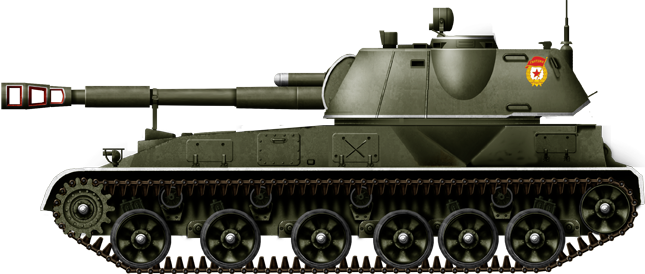
Initial 2S3, May Red Square 1972 Parade
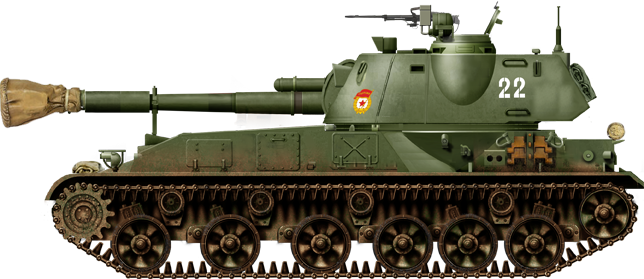
2S3M Akatsiya, Soviet army 1980s
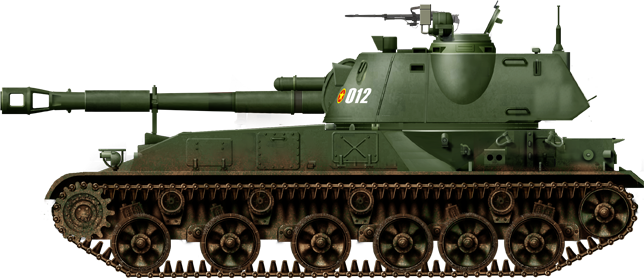
North Vietnamese 2S3M
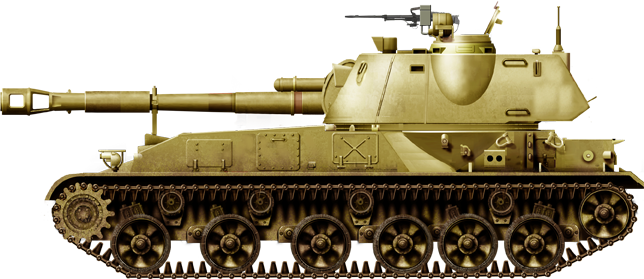
Iraqi 2S3M, as captured in 1991
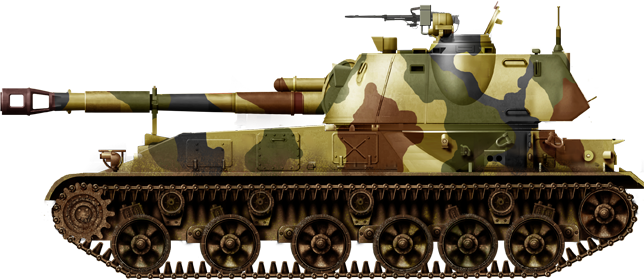
Kazakh 2S3M
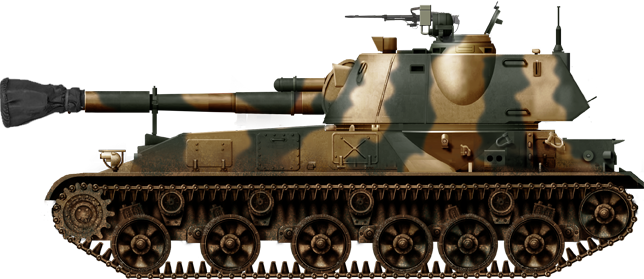
Algerian 2S3M
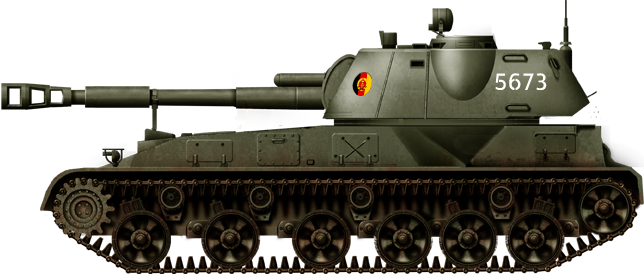
East German 2S3M, 1980s
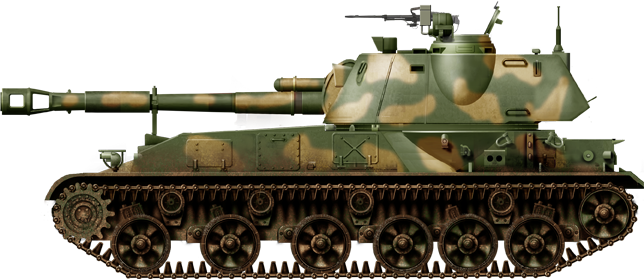
Syrian Republican Guards 2S3M, 2016
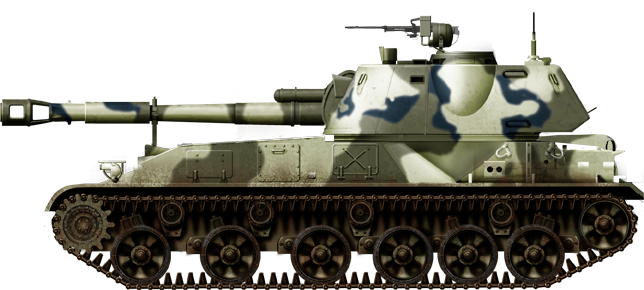
Russian 2S3M1, 2000s
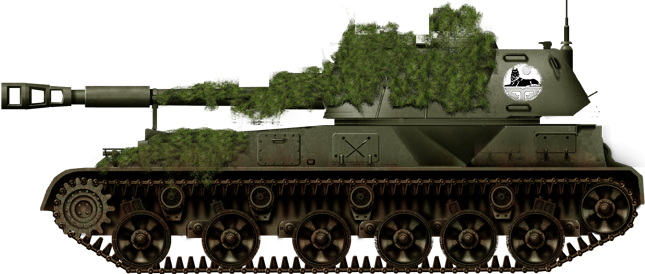
Russian 2S3M at Grozny, 1st Chechen war
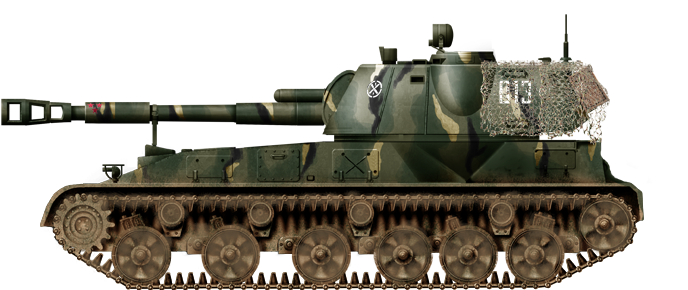
Chechen 2S3, same
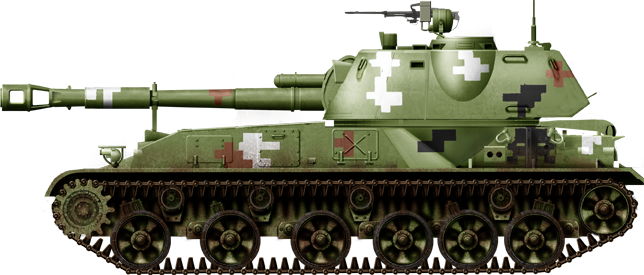
Ukrainian 2S3M with a digital camouflage
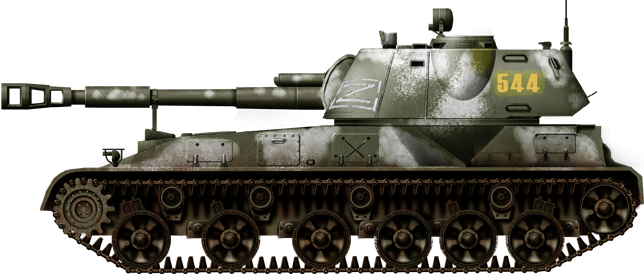
Russian 2S3M captured by Ukrainian forces
Gallery
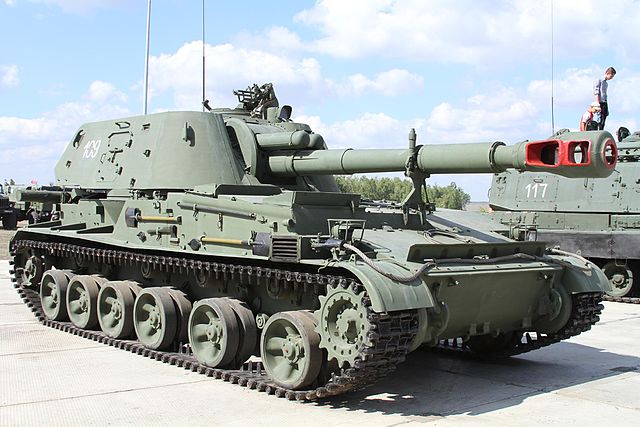
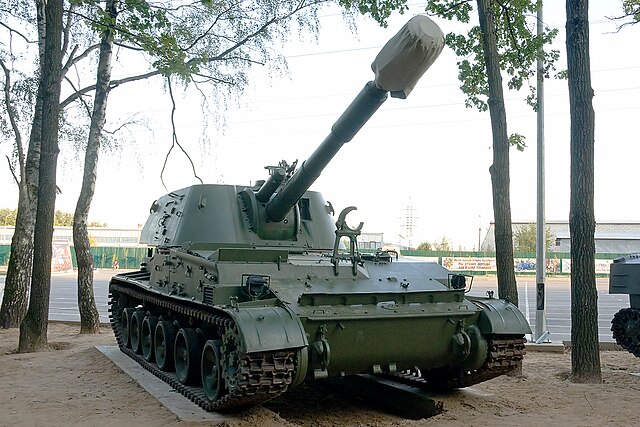
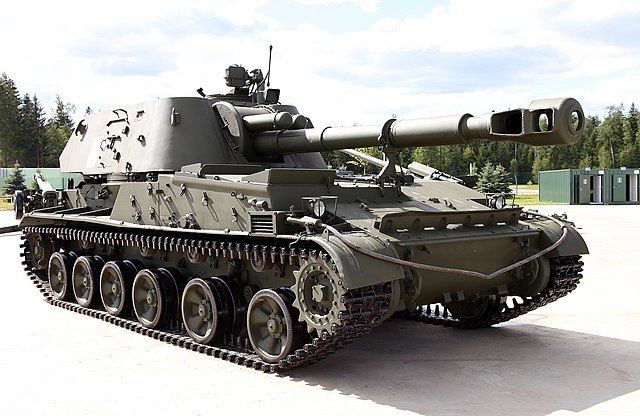
Preserved 2S3M at Patriot Park, front
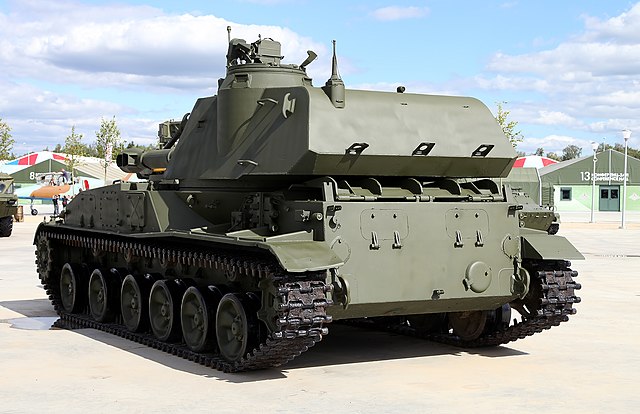
Preserved 2S3M at Patriot Park, rear
Preserved 2S3 at Togliatti
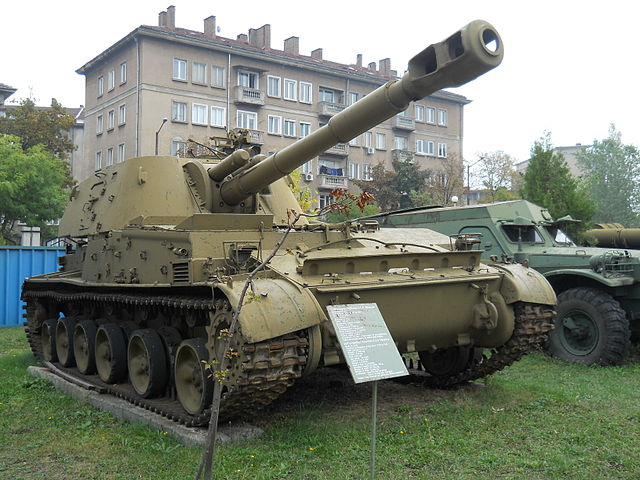
Preserved vehicle at the National Museum of History in Bulgaria

Cold War Tanks


































Cold war tanks posters

Cold War Main Battle Tanks

Cold War Soviet Army

